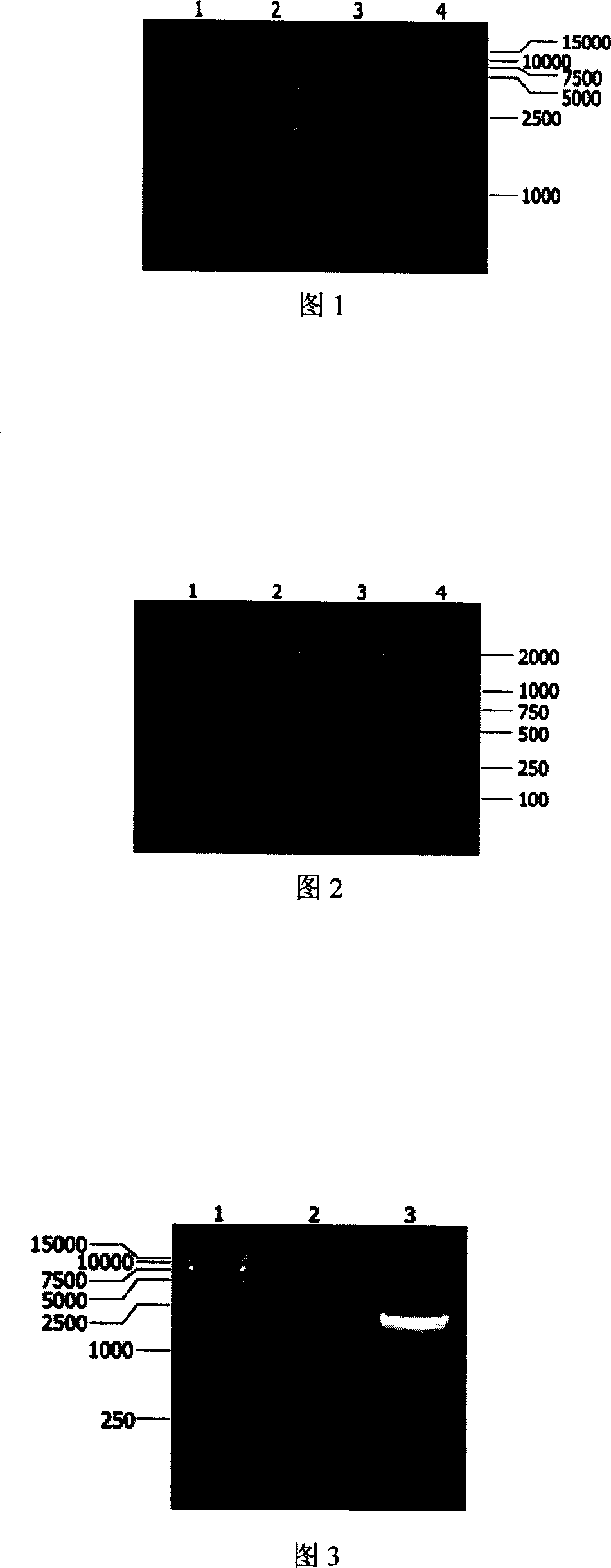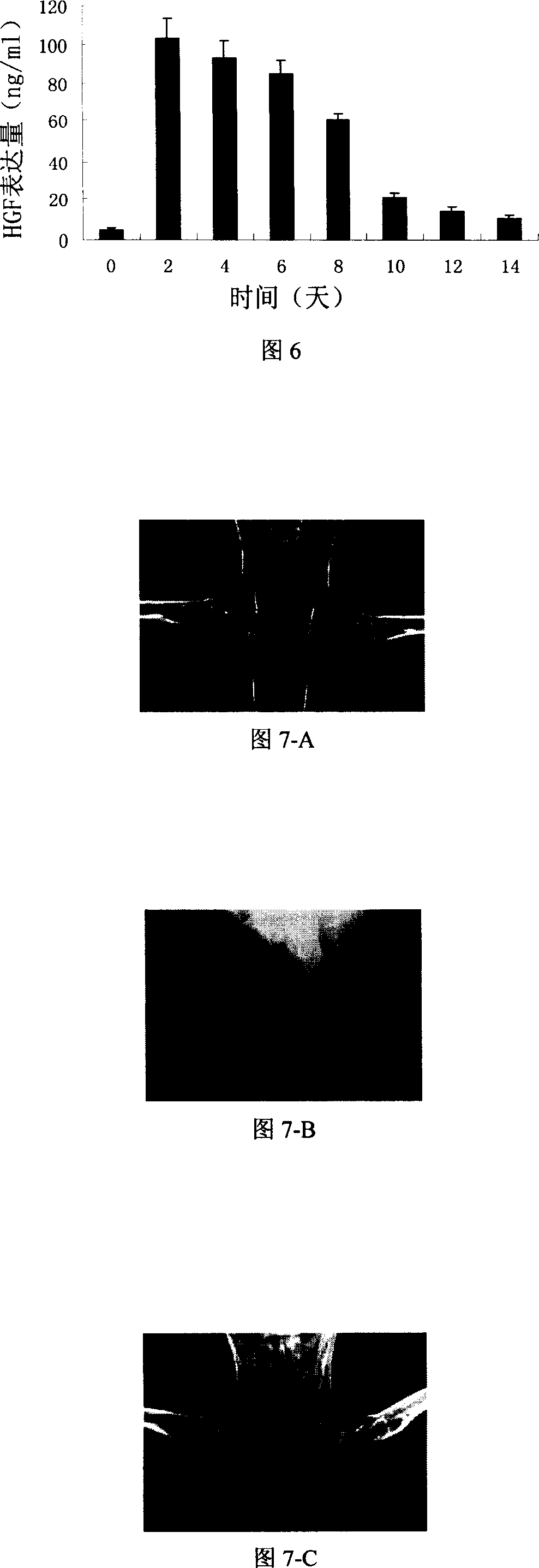Biological separation dose treating femoral head ischemic necrosis
A technology for ischemic necrosis and femoral head, applied in gene therapy, genetic material components, bone diseases, etc., can solve problems such as blood supply disorder, weakening treatment effect, cell loss, etc.
- Summary
- Abstract
- Description
- Claims
- Application Information
AI Technical Summary
Problems solved by technology
Method used
Image
Examples
preparation example 1
[0036] The composition of the biological dispensing agent of the present embodiment is as follows:
[0037] (1) Reagent I: a mixed aqueous solution of fibrinogen and aprotinin, wherein the content of fibrinogen is 80 mg / mL, and the content of aprotinin is 2000 KIU / mL;
[0038] (2) Reagent II: thrombin and CaCl 2 A mixed aqueous solution, in which the content of thrombin is 400IU / mL, CaCl 2 The content is 40mmol / mL;
[0039] (3) Reagent III: transgenic bone marrow stromal stem cells, the exogenous gene contained therein is the gene encoding human hepatocyte growth factor.
[0040] Among them, reagent I is obtained by mixing fibrinogen and aprotinin with water according to the ratio; reagent II is obtained by mixing thrombin and CaCl 2 It is obtained by mixing with water according to the proportion;
[0041] The preparation method of reagent III is:
[0042] 1. Using AdMax system to prepare recombinant adenovirus Ad-HGF
[0043] (1) Construct the shuttle plasmid pDC316 / HGF...
preparation example 2
[0155] The composition of the biological dispensing agent of the present embodiment is as follows:
[0156] (1) Reagent I: a mixed aqueous solution of fibrinogen and aprotinin, wherein the content of fibrinogen is 60 mg / mL, and the content of aprotinin is 1000 KIU / mL;
[0157] (2) Reagent II: thrombin and CaCl 2 A mixed aqueous solution, in which the content of thrombin is 250IU / mL, CaCl 2 The content is 40mmol / mL;
[0158] (3) Reagent III: transgenic bone marrow stromal stem cells, the exogenous gene contained therein is the gene encoding human hepatocyte growth factor.
[0159] Wherein, the preparation method of reagent III is the same as that of Example 1; reagent I is obtained by mixing fibrinogen and aprotinin with water according to the proportion; reagent II is obtained by mixing thrombin and CaCl 2 It is obtained by mixing with water according to the proportion.
preparation example 3
[0161] The composition of the biological dispensing agent of the present embodiment is as follows:
[0162] (1) Reagent I: a mixed aqueous solution of fibrinogen and aprotinin, wherein the content of fibrinogen is 100 mg / mL, and the content of aprotinin is 3000 KIU / mL;
[0163] (2) Reagent II: thrombin and CaCl 2 The mixed aqueous solution, wherein the content of thrombin is 500IU / mL, CaCl 2 The content is CaCl 2 40mmol / mL;
[0164] (3) Reagent III: transgenic bone marrow stromal stem cells, the exogenous gene contained therein is the gene encoding human hepatocyte growth factor.
[0165] Wherein, the preparation method of reagent III is the same as that of Example 1; reagent I is obtained by mixing fibrinogen and aprotinin with water according to the proportion; reagent II is obtained by mixing thrombin and CaCl 2 It is obtained by mixing with water according to the proportion.
PUM
 Login to View More
Login to View More Abstract
Description
Claims
Application Information
 Login to View More
Login to View More - R&D
- Intellectual Property
- Life Sciences
- Materials
- Tech Scout
- Unparalleled Data Quality
- Higher Quality Content
- 60% Fewer Hallucinations
Browse by: Latest US Patents, China's latest patents, Technical Efficacy Thesaurus, Application Domain, Technology Topic, Popular Technical Reports.
© 2025 PatSnap. All rights reserved.Legal|Privacy policy|Modern Slavery Act Transparency Statement|Sitemap|About US| Contact US: help@patsnap.com



